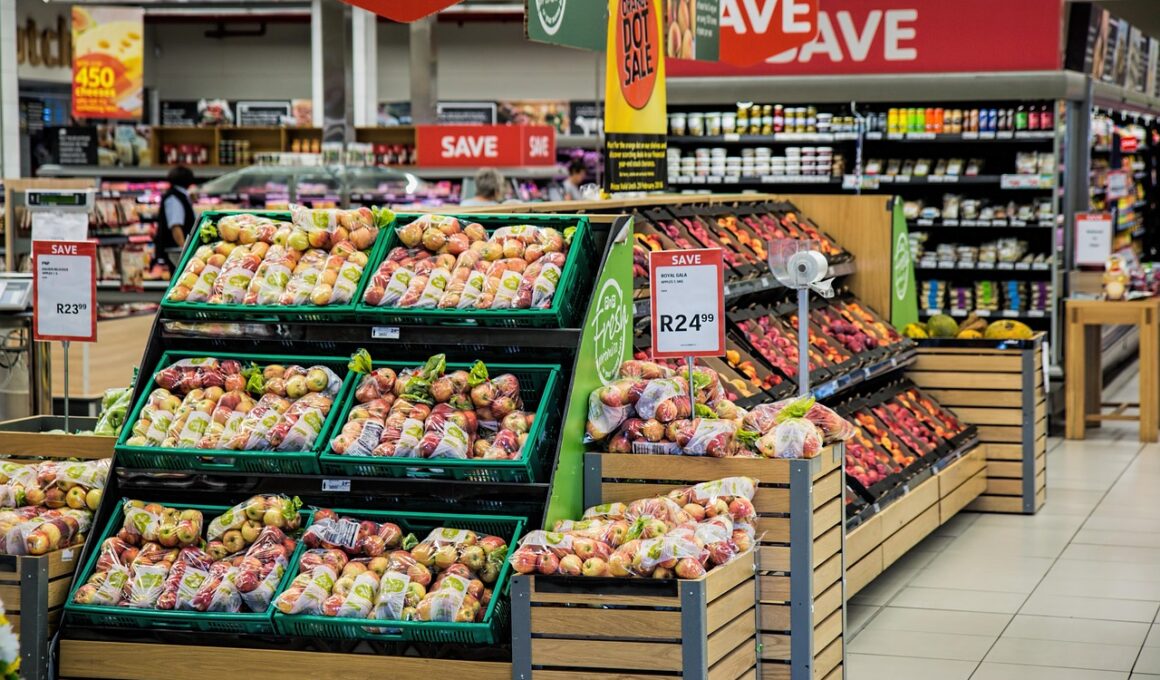The Influence of In-Store Technology on Consumer Purchase Decisions
In the ever-evolving landscape of retail, in-store technology has become a pivotal factor influencing consumer purchase decisions. Technologies such as interactive displays, mobile apps, and self-checkout stations create engaging shopping experiences that significantly impact buyer behavior. These innovations provide seamless access to product information, pricing comparisons, and promotional offers, enhancing customer satisfaction. For instance, touchscreen kiosks that allow customers to browse a variety of products can increase their engagement and reduce decision-making time. Moreover, integrating Augmented Reality (AR) into stores enables customers to visualize products in a unique way, increasing the likelihood of purchase. As retailers continually seek to enhance customer experiences, utilizing in-store technology has proven to be an effective method in attracting and retaining consumers. Analytics derived from these technologies help retailers understand consumer preferences and optimize store layouts accordingly. This adds a personalized touch to the shopping experience, driving sales and fostering loyalty. In this article, we will explore various in-store technologies and their direct effects on consumer behavior. By examining these innovative solutions, retailers can better understand how to leverage technology for improved sales outcomes.
Impact of Interactive Displays
Interactive displays are transforming how customers interact with products in retail environments. By allowing shoppers to engage directly with digital content, these displays capture attention and generate interest in offerings. For example, many electronics stores utilize interactive screens that let consumers explore features and specifications of gadgets, dramatically enhancing the traditional shopping experience. The visual and tactile stimulation provided by these displays helps customers understand product benefits, leading to informed decision-making. Furthermore, when consumers interact with displays, they often spend more time in-store, resulting in increased sales opportunities. Retailers reported a noticeable uptick in conversions when utilizing these technologies effectively. Additionally, showcasing customer testimonials and reviews on interactive displays can build trust, further steering purchase decisions. Customers tend to favor brands that demonstrate transparency through user feedback. These combined functionalities of interactive displays not only engage shoppers but also educate them, reinforcing their purchasing confidence. This fusion of information and engagement has reshaped the retail landscape, prompting businesses to invest heavily in technology that supports a more immersive shopping experience. Ultimately, retailers leveraging this technology stand to benefit from heightened sales and customer loyalty.
Mobile applications are increasingly valuable tools in guiding consumer purchase behavior in retail settings. These apps facilitate a connection between shoppers and the products they desire, offering features like real-time inventory checks, personalized recommendations, and seamless payment options. Such convenience enables consumers to make purchasing decisions quickly, ultimately enhancing their shopping experience. Additionally, in-app promotions and exclusive deals can motivate shoppers to make impulsive buys. As consumers become more reliant on their smartphones, retailers must adapt by developing user-friendly apps tailored to their customers’ needs. Moreover, mobile apps offer retailers crucial data regarding shopping habits, which can be analyzed to optimize strategies for product placement and promotion. Integrating loyalty programs into these applications fosters ongoing consumer engagement and retention, as customers appreciate the value of rewards. As in-store technology continues to advance, businesses must prioritize mobile app development to maintain relevance in a competitive market. Retailers who invest in comprehensive mobile experiences not only draw traffic to their physical locations but also enhance their brand reputation. This evolution signifies the crucial role of mobile technology in shaping modern consumer behavior and reinforcing purchase decisions.
The Role of Self-Checkout Systems
Self-checkout systems have revolutionized the retail landscape, allowing consumers to speed through their purchases without the need for cashier assistance. These systems enhance the shopping experience by providing greater convenience and reducing wait times, which are critical factors for today’s time-pressed shoppers. Implementing self-checkout not only streamlines the purchasing process but also gives customers a sense of empowerment as they control their transactions. Research indicates that many consumers prefer self-checkout options when shopping for small quantities of items, as it allows for quicker exits. This convenience factor can lead to increased sales volume as customers are less likely to abandon their purchases due to long lines. Additionally, the introduction of contactless payment methods within self-checkout systems heightens safety and efficiency, appealing to health-conscious consumers. Retailers can utilize data analytics from these systems to gain insights into peak shopping hours, preferred products, and purchasing patterns. By optimizing self-checkout systems according to consumer feedback and behavior, retailers can create a more efficient shopping environment. This technology not only meets consumer demands but also boosts operational efficiencies that ultimately increase sales and customer satisfaction.
Augmented Reality (AR) technology is making significant waves in the retail sector, adding a futuristic layer to the shopping experience. With AR, retailers can provide customers a unique interactive way to visualize products before purchase. For instance, beauty retailers frequently employ AR to allow shoppers to see how makeup products would look on their skin without trying them. This fosters confidence and informed decision-making among consumers who are unsure about color choices or styles. Similarly, furniture retailers offer AR applications that let consumers visualize how a piece of furniture would look in their homes, which can reduce the likelihood of returns and dissatisfaction post-purchase. Engaging consumers through AR technology can also lead to increased social sharing and word-of-mouth marketing, as excited customers may showcase their shopping experiences on social media platforms. Moreover, leveraging AR experiences can heighten brand loyalty, as consumers appreciate brands that embrace innovative technologies. As this technology continues to evolve, it paves the way for enhanced understanding and decision-making in retail, reaffirming the pivotal role that in-store technology plays in influencing consumer purchase patterns.
The Importance of Data Analytics
Data analytics serves as a cornerstone of effective retail strategies, especially when integrated with in-store technologies. By analyzing consumer behavior collected from various technological systems, retailers can glean invaluable insights into shopping patterns, preferences, and trends. This information can be pivotal for making informed marketing decisions and optimizing inventory management in real-time. Moreover, predictive analytics enables retailers to personalize shopping experiences by recommending products based on previous purchases or browsing behavior. Such personalization leads to increased customer satisfaction and higher conversion rates. Additionally, understanding peak shopping times allows for more strategic staffing and inventory decisions, ultimately maximizing sales potential. Retailers utilizing data to inform their decisions often find themselves equipped to create targeted marketing campaigns that resonate with their clientele. As technology continues to advance, the importance of harnessing data analytics for competitive advantage only grows. Retailers must be proactive in adopting these strategies to not only attract customers but also ensure they have tailored experiences that encourage repeat visits. Analytics-driven decisions empower businesses to thrive in a challenging market landscape and adapt to changing consumer preferences effectively.
Additionally, as retailers integrate multiple in-store technologies, they create an ecosystem that enhances the overall shopping experience. Cohesive technology interactions lead to increased customer engagement and satisfaction as consumers find it easier to navigate and transact while in-store. For instance, synchronizing mobile apps with in-store beacons can deliver timely promotions based on customer location, heightening the likelihood of impulse purchases. Consumers appreciate when businesses anticipate their needs and provide relevant offers right when they are needed. Furthermore, incorporating technology into the retail space allows for real-time customer feedback which can inform operational adjustments and improvements. The synergy between various technological elements fosters a competitive edge in service and convenience, which is increasingly becoming a consumer expectation. By investing in these technological solutions, retailers can not only enhance productivity but also solidify their relationship with customers. Overall, the combination of in-store technologies, such as AR, self-checkouts, and mobile applications leads to a shopping experience that feels personalized and engaging. The positive impact of this technological advancement on consumer purchase decisions solidifies its critical role in modern retail marketing strategies.
In conclusion, the integration of in-store technology is undeniably reshaping consumer purchase behaviors in the retail environment. As shoppers become more accustomed to and reliant on technology, retailers must adapt their strategies accordingly to harness the benefits of these innovations. From interactive displays and mobile applications to self-checkout systems and augmented reality, the choices presented to consumers are abundant and varied. Expanding the in-store technology ecosystem not only addresses consumer needs but also drives sales and enhances brand loyalty. In today’s marketplace, understanding the influence of these technologies is essential for optimizing the retail experience. Retailers who embrace and innovate with technology can ultimately position themselves at the forefront of the industry. As we move forward, the focus will increasingly shift towards creating engaging spaces that blend physical and digital experiences seamlessly. By prioritizing technology integration, retailers can facilitate informed purchasing decisions and foster lasting relationships with their customers. Ultimately, the continued evolution of in-store technology will be instrumental in defining the future of retail marketing and consumer engagement.


